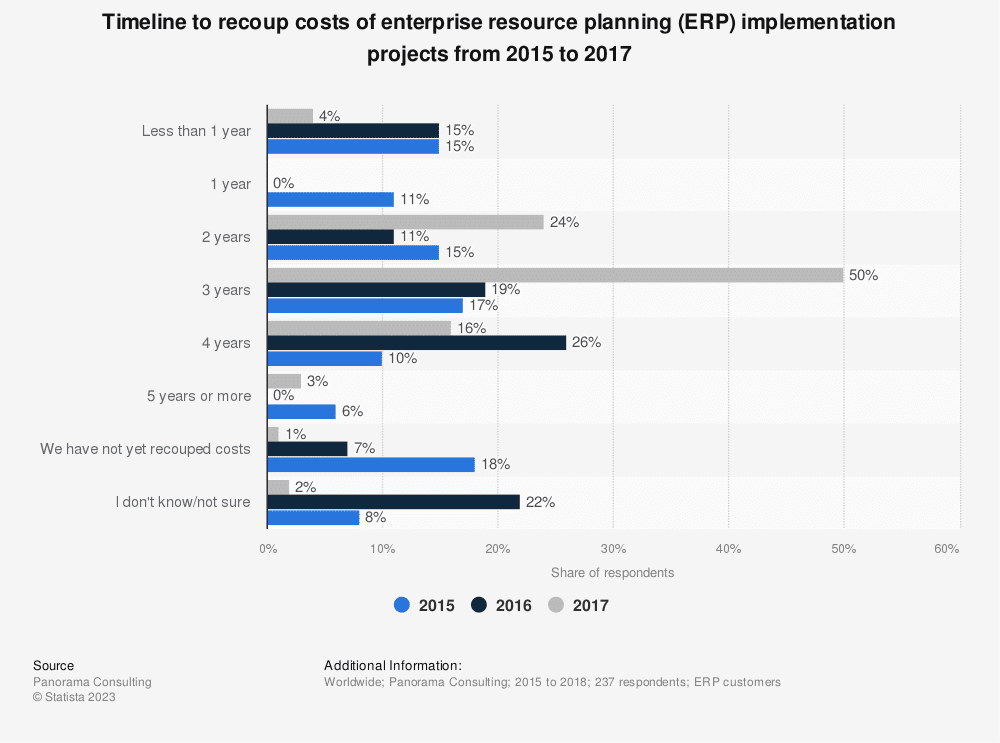Calculating Total Cost of Ownership (TCO) on Enterprise Software Vendor Purchases: A Collaborative Approach
As enterprise software buyers seeking the best-fit digital solutions, accurately estimating the Total Cost of Ownership (TCO) is crucial for making informed IT decisions. The TCO encompasses all direct and indirect costs incurred throughout the software’s lifetime and is critical in calculating the Return on Investment (ROI). In this article, we will explore the various costs associated with different types of enterprise software and collaboration’s significance in making well-informed selection choices based on ROI.
What is TCO in Software?
Understanding the TCO is crucial for making well-informed software purchasing decisions. By considering the complete cost picture, organizations can assess the true financial impact of adopting a software solution and make choices that align with their long-term business objectives. Additionally, collaboration among key stakeholders is essential to accurately estimate hidden costs and risks, ensuring a comprehensive TCO estimation and confident decision-making in software selection.
Total Cost of Ownership (TCO) in software refers to the comprehensive calculation of all direct and indirect costs associated with acquiring, implementing, and maintaining a particular software solution throughout its entire lifecycle. TCO considers not only the initial purchase and deployment costs but also the ongoing expenses required to operate and support the software over time.
In the context of enterprise software, TCO is a critical metric for organizations seeking to make informed IT decisions. It helps them understand the true financial impact of adopting a specific software solution and assess its long-term value. By considering all aspects of costs, TCO enables businesses to evaluate the Return on Investment (ROI) more accurately, which is the potential benefit or value the software can bring in comparison to its overall cost.
Understanding the Costs of Different Enterprise Software:
Chris Doig’s CIO.com article, “Calculating the total cost of ownership for enterprise software” Chris discusses the costs involved in three main types of enterprise software:
- Cloud Software: Examples include Salesforce or NetSuite, and costs include software licenses, data migration, user training, external system interfaces, and more.
- Off-the-Shelf Software: Typically runs on-premises or in a hosted data center. Startup costs encompass software licenses, hardware, implementation, data migration, training, and customization.
- Custom Software: Developed by a company to gain a competitive edge or meet specific needs. Costs include implementation, training, enhancements, user support, disaster recovery, and data center expenses.
To accurately calculate the TCO of enterprise software, it is essential to consider all potential costs beyond the initial deployment. These costs include hardware, hosting, support, and the necessary expenses associated with buying and owning the software solution.
In recent years, calculating enterprise software’s Total Cost of Ownership (TCO) has seen significant changes and trends. The adoption of cloud-based solutions and Software-as-a-Service (SaaS) offerings has increased, influencing pricing models and flexibility. Integration, scalability, security, and compliance considerations have become more crucial in TCO calculations.
Additionally, collaboration among key stakeholders has become a norm to accurately assess hidden costs and risks. Organizations now emphasize the software’s overall value and potential ROI rather than solely focusing on TCO. The dynamic technology landscape continues to evolve, and staying informed about the latest developments is essential for making well-informed decisions in software selection.
Collaboration with key stakeholders is also crucial in making well-informed software selection choices based on ROI and TCO. By working together, stakeholders can identify hidden costs and evaluate possible risks that fluctuate TCO over time, leading to better decision-making on enterprise software solutions.

Panorama’s 2018 ERP report, page 27
The Importance of Tech Stack ROI for Digital Transformation
Return on Investment (ROI) is a critical metric often used in technology purchase decisions. It helps quantify the potential improvements and business value that technology investments can bring. Understanding the ROI of your tech stack enables you to identify which solutions are truly delivering value and which ones may be draining your innovation budget. This knowledge empowers you to make data-driven decisions, freeing up resources for transformative solutions that drive your digital journey.
Unveiling Hidden Costs: The Key to Smart Software Selection
Digital transformation is about selecting best-fit software that will meet the needs of your business in collaboration with key stakeholders. Unfortunately, finding these solutions has become so muddled with exorbitant costs, exhausting timelines, and conspicuous agendas. Recent world events have sped up digital transformation. With recession rumors swirling and inflation at an all-time high, IT leaders realize that getting through this crisis requires innovation.
However, in many cases, CIOs and tech departments would rather trundle along with outdated systems rather than engage in the process of finding the right solutions.
Developments within the software industry are automating processes and saving companies millions. Ironically, the technology buying process hasn’t caught up until now. Many organizations still buy technology based on the leading brands or the best reviews, not on how well they meet the organization’s needs.
Collaboration for Accurate TCO Estimations
Collaborating with key stakeholders from various departments within your organization is crucial for accurately estimating the TCO. By involving IT leaders, finance experts, procurement specialists, and end-users, you gain diverse perspectives that contribute to a comprehensive TCO estimation. This collaborative effort fosters transparency, ensuring all potential costs are accounted for and preventing underestimation.
The Importance of Realistic TCO and ROI Estimates
Creating realistic TCO and ROI estimates at the beginning of your software selection project is essential. You can make better-informed decisions by updating the TCO for each shortlisted software alternative during the selection process. Comparing the ROI of different options, such as cloud, custom, and off-the-shelf software, helps identify significant differences in ROI that may influence your final choice.
Accurate TCO Estimation – A Strategic Imperative
Unveiling Hidden Costs – A Wake-Up Call for Software Selection
Accurately estimating the Total Cost of Ownership (TCO) for enterprise software is a crucial and strategic step in making well-informed software selection decisions. The enlightening insights from Chris Doig’s article on CIO.com have shed light on the often overlooked hidden costs associated with different software solutions. As IT leaders, we must proactively collaborate with key stakeholders to ensure a comprehensive TCO estimation encompassing all aspects of software implementation.
Collaboration and Realism – Keys to Confident Decision-Making
By adopting a collaborative approach and making realistic TCO and Return on Investment (ROI) estimates, our organization can confidently choose the most suitable software solution to drive successful digital transformation. Empowered with the knowledge from this article, we can now navigate the complexities of TCO calculations with precision and ensure our software investment decisions align with our long-term business objectives.
Transforming Your Business and Bottom Line with Accurate TCO: Olive’s Solution
Building your tech stack can be daunting, fraught with risks and potential pitfalls. The investment of time and finances and the challenge of aligning various departments can overwhelm the process. However, with the right solutions, chosen collaboratively with your entire organization, the rewards can be exceptional, significantly boosting the ROI on your tech investments.
We understand the struggles faced by businesses when navigating the tech landscape. From vendors making lofty promises to biased market comparison evaluators, finding the right technology to match your needs can be an uphill battle. Conducting thorough need analysis, surveying the market, and identifying credible technology options are essential to discovering the solutions that will transform your business and enhance your bottom line.
At Olive, we take a refreshingly different approach to empowering your digital transformation. Our vendors are not featured on our list based on payments; we maintain an unbiased stance to preserve our credibility. Instead, Olive prioritizes your needs and invites the market to respond directly to those needs. As an anonymous buyer, you can create an opportunity, and vendors will bid on it based on their suitability. Rest assured, Olive recommends only the best match vendors, completely clarifying why they are the right fit.
Our process aims to cut through unnecessary sales pitches and wasted efforts, ensuring you find the perfect solutions without any guesswork or biased quadrant placement. With Olive, there’s no need to invest valuable time, money, or resources in a technology that doesn’t align with your unique business requirements.
Your long-term success is at the heart of our digital transformation strategy. At Olive, we become your dedicated partner, advocating for what genuinely suits your company’s needs. Every client is unique, and with Olive, you gain a supportive ally committed to driving your business toward unprecedented success.
Choose Olive, and experience a tech stack that transforms your business and elevates your bottom line, bringing you lasting prosperity and growth.





